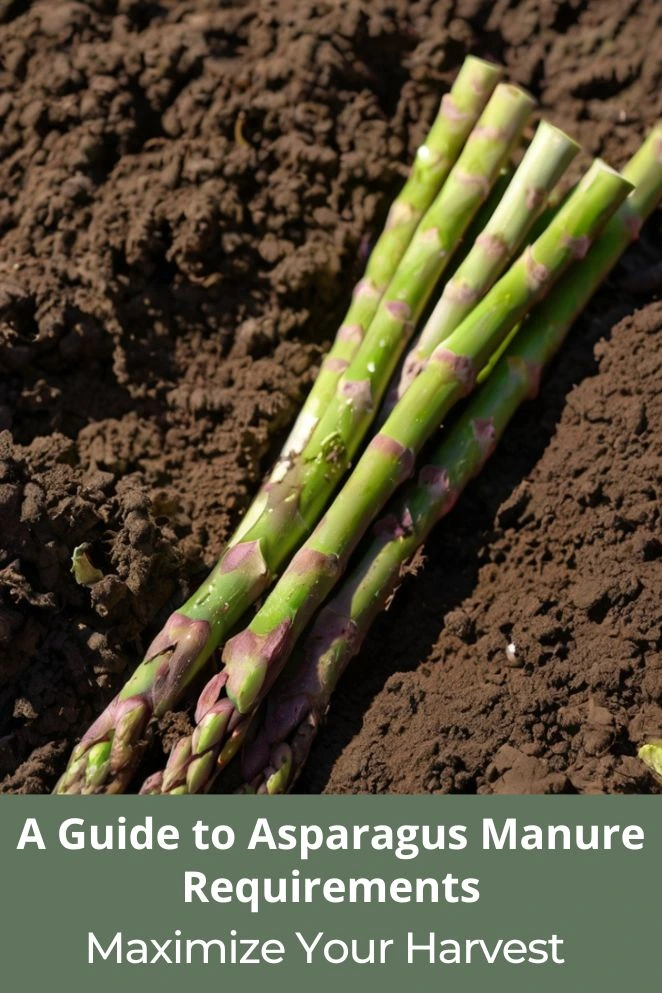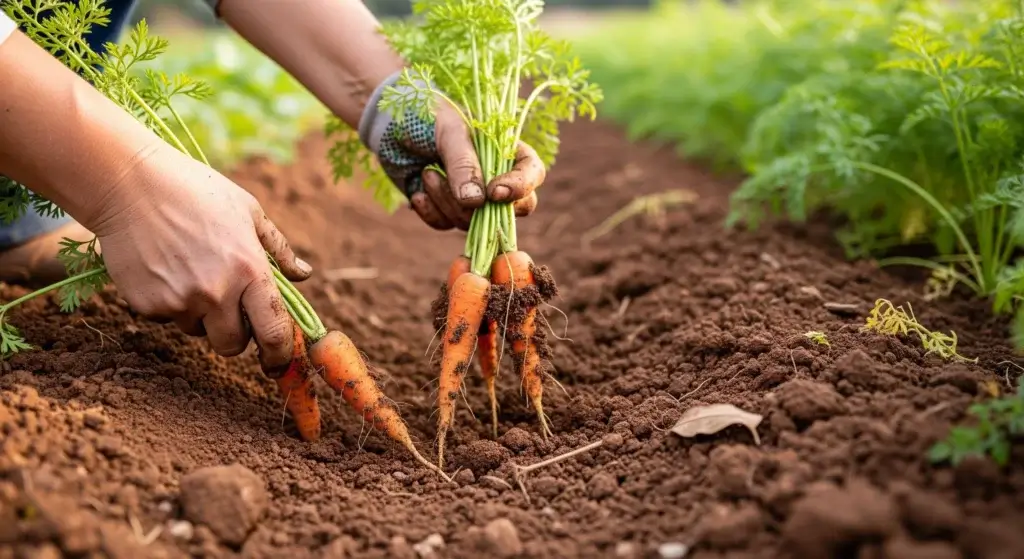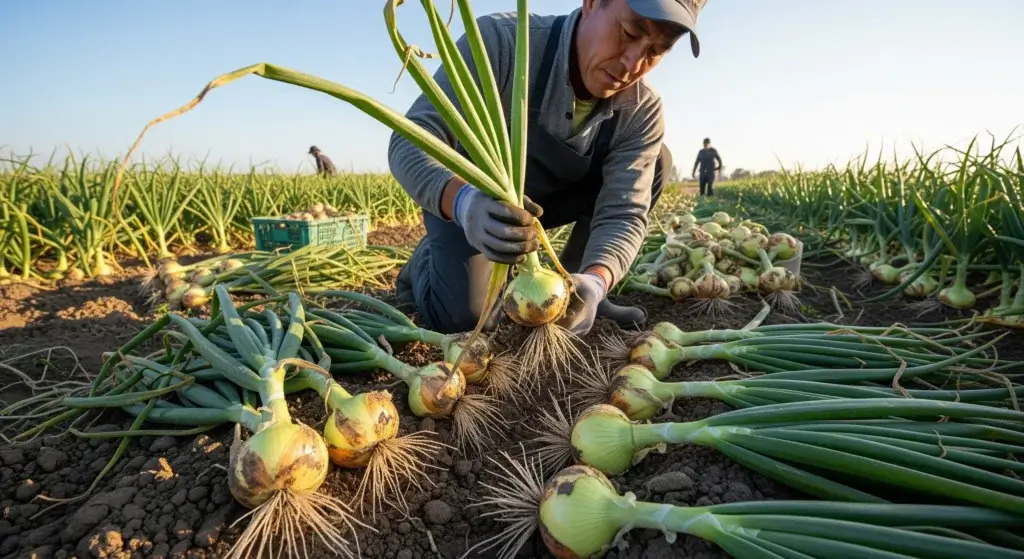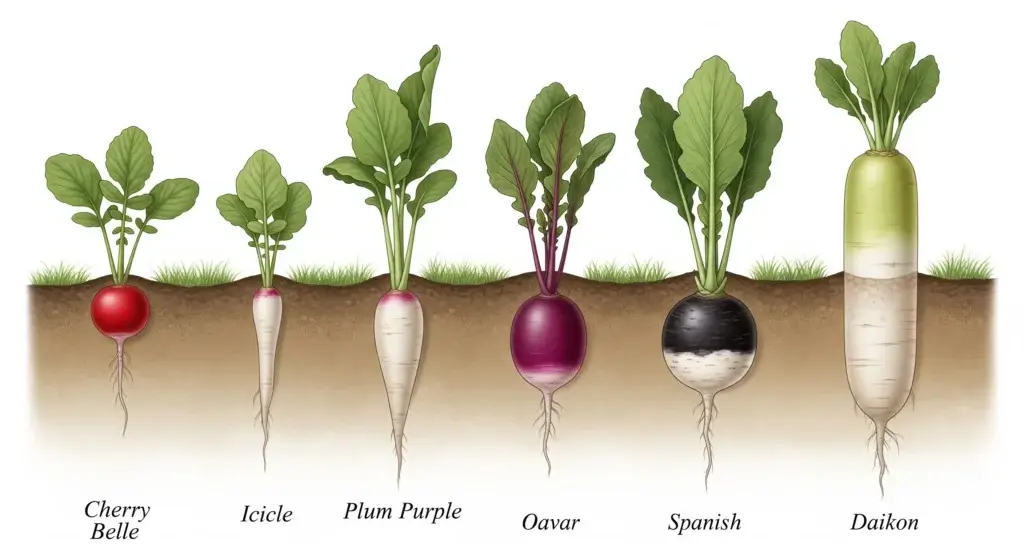
Growing thick, tasty asparagus isn’t just about tossing crowns in the dirt and waiting.
The secret weapon? Manure.
Getting the feeding right is what turns a so-so bed into a decades-long asparagus buffet.
This guide breaks down exactly how to prep your soil and when to feed so your plants stay happy and keep pumping out tender, delicious spears year after year.
Understanding Asparagus Nutritional Needs
Asparagus isn’t a quick snack crop—it’s a 20-year marathon runner.
To keep it strong, you’ve gotta feed it right.
The big three (main course)
- Nitrogen (N): Fuels those tall, ferny “solar panels” that charge up next year’s harvest. More ferns = thicker spears later.
- Phosphorus (P): Builds superhero roots. Weak roots = weak spears. Manure or bone meal are like protein bars for crowns.
- Potassium (K): The bodyguard. Helps fight disease, drought, and stress so your spears come out strong and tender.
The side dishes
Calcium keeps spears crisp, magnesium powers photosynthesis (no gas = no go), and trace minerals like iron and zinc act like vitamins—small amounts, but totally essential.
Types of Manure for Asparagus
Not all manure is created equal.
Different animals = different plant snacks. Knowing which type to use is like picking the right fuel for your car—get it right, and your asparagus goes beast mode.
Composted chicken manure
Chicken poop is basically the energy drink of manures—loaded with nitrogen, phosphorus, and potassium.
But here’s the catch: fresh chicken manure is way too strong (“hot”) and will burn your plants like over-fertilizing with chili powder.
Compost it first, and it becomes pure gold
Benefits:
- Super nutrient-dense
- Fast nutrient release for quick growth
- Amazing for boosting nitrogen (your ferns will love it)
- Way more powerful than cow manure if handled right
Application: Spread 2–3 inches of composted chicken manure around your plants in early spring and mix it into the topsoil.
Cow (cattle) manure
Cow manure is the chill, steady provider. It’s not as flashy as chicken poop, but it won’t burn your plants either.
Think of it as the slow-release vitamin—great for soil health, water holding, and long-term fertility.
Benefits:
- Gentle on plants (low burn risk)
- Improves soil structure and moisture
- Releases nutrients steadily over time
- Packed with organic matter for the long haul
Application: Lay down 3–4 inches of composted cow manure once a year, ideally in fall or early spring before spears show up.
Other manure types
- Sheep manure: Like cow manure but slightly stronger. Great mixed with other composts for a balanced boost.
- Horse manure: Has plenty of organic matter, but watch out—it often carries weed seeds. Always compost it well unless you like surprise weeds taking over.
Timing Your Manure Applications
When you feed your asparagus is just as important as what you feed it.
Think of it like an athlete’s meal plan—you don’t eat the same thing before a game, after a game, and during off-season.
Asparagus has its own growth phases, and if you nail the timing, those spears will be fire.
Pre-planting soil preparation
Before you even drop an asparagus crown in the ground, you’ve gotta prep the bed like you’re setting up a 20-year Airbnb.
The soil is the foundation—mess it up now, and you’ll regret it for decades.
Steps:
- Test the soil pH (they like it between 6.5 and 7.5—basically “Goldilocks” conditions).
- Add lime if needed to balance pH.
- Work 4–6 inches of composted manure into the topsoil.
- Dig that stuff in deep—like 10–12 inches.
- Let it rest for 2–4 weeks so the soil can chill before planting.
Spring fertilization
This is your “pre-game meal.” Early spring, before spears pop up, is when asparagus wants a nutrient boost.
Skip it, and your harvest won’t hit max potential.
Strategy:
- Add manure when the soil is workable but before spears break through.
- Always use composted manure—fresh stuff will fry those baby spears.
- Mix it gently into the top 2–3 inches of soil.
- Water it in like you’re sealing the deal.
Post-harvest feeding
Once you’re done harvesting (usually June), asparagus needs to recover.
This is like giving your plant a giant recovery shake—it’s not about today, it’s about charging up for next season.
Benefits:
- Replaces all the nutrients your greedy harvest stole.
- Powers lush fern growth (those ferns = solar panels).
- Stores energy in the crown for next year’s fat spears.
Fall applications
Late fall, after the ferns have died back, is like giving asparagus a slow-cooked winter stew.
It sits in the soil, breaks down, and by spring your plants wake up to a stocked pantry.
- Improves soil structure
- Slowly releases nutrients over the dormant season
- Basically tucks your asparagus in for winter with a midnight snack.
Application Rates and Methods
Here’s the thing—you can’t just dump manure on asparagus like you’re feeding goats.
Too much, and you’ll burn it out. Too little, and the spears will sulk. It’s about balance, like seasoning food.
Established beds
If your asparagus is a veteran (3+ years old), it’s ready to eat big:
- Chicken manure: 1–2 cubic yards per 1,000 sq. ft. per year. This stuff is like an energy drink—strong, so don’t overdo it.
- Cow manure: 2–3 cubic yards per 1,000 sq. ft. per year. Think of this as slow-release carbs—steady and reliable.
- Mix it up: Blend different manures for a balanced “buffet plate.”
New plantings
Baby asparagus crowns are like toddlers—you don’t feed them steak, you start them off with mashed potatoes. Same idea here:
- Use only well-composted manure (no fresh “hot stuff”).
- Cut the rates in half (50% of the adult dose).
- Focus on building good soil structure first—these kids need a safe home before a feast.
Application techniques
Broadcasting method:
- Spread manure evenly like you’re buttering toast.
- Work it into the top 2–3 inches with a rake.
- Keep your distance from the crowns—don’t smother them.
- Water it in so the nutrients can start flowing.
Side-dressing method:
- Sprinkle manure in neat rows beside the plants.
- Stay about 6 inches away from crowns (they’re sensitive).
- Lightly mix it into the soil.
- As plants grow stronger, you can creep closer to the crowns—like earning their trust.
Common Mistakes to Avoid
Alright, let’s talk about the rookie mistakes that can totally wreck your asparagus game.
Think of these as the “don’ts” you wish someone warned you about before you wasted months of work.
Fresh manure application
Never—and I mean never—dump fresh manure straight onto your asparagus bed.
That’s like pouring boiling soup on your sneakers: instant regret. Fresh manure will:
- Burn roots and crowns like hot chili on bare skin
- Bring in nasty pathogens you don’t want near your food
- Mess up nutrient balance
- Attract pests and even rodents (trust me, you don’t want a rat buffet in your garden)
Over-fertilization
It’s tempting to think, “More food = bigger plants,” but asparagus doesn’t work like that.
Overfeeding nitrogen is like giving your plants 20 cans of Monster Energy. They’ll get big and wild, but the quality tanks. Watch out for:
- Thick, tough spears (like chewing on a pencil)
- Weaker plants that bugs love to munch
- Spears that taste meh instead of sweet and tender
- Late harvests that keep you waiting
Ignoring soil pH
This one’s sneaky. You can add the “perfect” manure cocktail, but if your soil pH is off, asparagus can’t even access the nutrients—it’s like locking the fridge and throwing away the key.
Always test your soil and adjust (asparagus likes it between 6.5–7.5).
Maximizing Long-Term Success
Asparagus isn’t a short-term fling, it’s a 20-year relationship.
If you want your bed to keep delivering sweet, fat spears for decades, you’ve gotta think long-term and stay consistent.
Record keeping
Yeah, I know—it sounds boring, like school notes.
But trust me, keeping track of your asparagus bed is like having cheat codes for gardening. Write down things like:
- What kind of manure you used and how much (chicken, cow, mix, whatever)
- Soil test results—so you can actually see trends instead of guessing
- How much you harvested and whether the spears were skinny, thick, sweet, or blah
- Weather notes (because asparagus notices when Mother Nature throws a tantrum)
Continuous improvement
Your asparagus bed is kinda like a video game character—you level it up over time.
That means constantly tweaking your strategy based on:
- How your plants are actually performing (lush ferns = good, sad ferns = fix it)
- Soil test trends (numbers don’t lie)
- Harvest data—did you get more or less than last year?
- New tricks and tips from updated research or seasoned growers
Conclusion
Asparagus is not a “one-and-done” crop—it’s a legacy project.
If you treat the soil right with well-rotted manure or compost, you’re basically setting up a buffet that keeps feeding your plants for decades.
The secret sauce? Consistency.
Test your soil, feed with composted manure at the right times, and keep notes like you’re running a science experiment.
Chicken manure gives a quick energy boost, cow manure keeps things steady, and mixing them is like covering all your bases.



